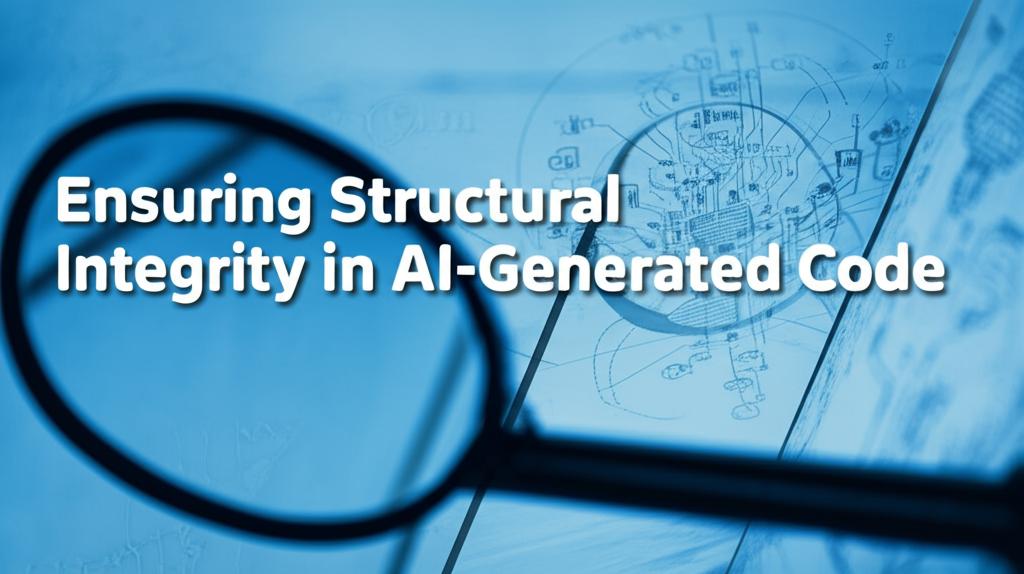While Artificial Intelligence (AI) significantly accelerates software development by generating code snippets, functions, or even entire modules, ensuring the structural integrity of this generated code is paramount. Poorly structured code, regardless of its origin, leads to maintainability issues, scalability problems, hidden bugs, and increased technical debt. Here's a look at key practices to maintain architectural soundness when leveraging AI in coding:
Human Expertise Remains CentralAI tools are powerful assistants, not replacements for experienced developers. Human oversight is non-negotiable.
- Rigorous Code Reviews: All AI-generated code must undergo thorough manual reviews by developers familiar with the project's architecture and requirements. This review should focus not just on functional correctness but also on adherence to design patterns, architectural principles, and overall structural soundness.
- Understanding Before Committing: Developers must fully understand the logic, execution path, and potential edge cases of any AI-generated code before integrating it. Don't treat the AI output as a black box. Question unexpected or overly complex solutions.
- Ownership and Accountability: The developer integrating the AI code is ultimately responsible for its quality, security, and maintainability. This ownership mindset encourages deeper scrutiny.
AI models perform better when given specific guidance and context.
- Align AI with Project Standards: Configure AI tools or provide prompts that include information about your project's specific coding standards, style guidelines, naming conventions, and architectural patterns.
- Leverage Existing Codebase Context: Tools that can analyze the existing codebase can generate suggestions more consistent with the established structure. Ensure the AI has relevant project context.
- Define "Rules of Engagement": Instruct the AI on specific requirements, such as generating type hints, following specific design patterns (e.g., SOLID principles), or using designated libraries.
How you integrate AI into the development process significantly impacts structural outcomes.
- Iterative Generation and Review: Break down complex tasks into smaller, manageable sub-tasks. Prompt the AI to generate specific functions or classes first. Review, test, and validate each piece before moving on to the next level of complexity.
- Encapsulate AI Code: Wrap AI-generated logic within well-defined modules, functions, or classes. This improves readability, testability, and makes it easier to refactor or replace later if needed.
- Start Small, Evaluate Incrementally: When introducing AI tools, consider applying them to less critical components first to evaluate the quality and structural integrity of the output before using them on core architectural elements.
Leverage tools to automatically enforce structural and quality standards.
- Static Code Analysis: Integrate tools like SonarQube, linters, and formatters into your workflow and CI/CD pipelines. These tools can automatically detect code smells, overly complex structures, security vulnerabilities, and deviations from defined standards in AI-generated code. Some tools offer specific features or stricter rulesets for AI-generated code assurance.
- Comprehensive Testing: Implement unit tests to verify individual components generated by AI and, crucially, integration tests to ensure these components interact correctly within the broader application architecture. Testing helps validate structural assumptions.
- Security Scanning: Use security analysis tools (SAST/DAST) to identify vulnerabilities that might arise from poorly structured code or insecure patterns suggested by the AI.
- Document AI Usage: Note where and why AI assistance was used, especially for complex solutions. Document the reasoning behind accepting specific AI suggestions to aid future understanding and maintenance.
- Request Explanations: Many AI tools can explain the code they generate. Utilize this feature to ensure understanding and to verify the logic aligns with the intended structure.
AI code generation offers immense potential for boosting productivity, but it must be managed responsibly to avoid compromising the structural integrity of software. By combining the efficiency of AI with vigilant human oversight, clear standards, strategic workflows, automated quality checks, and thorough testing, development teams can ensure that AI-generated code contributes positively to a robust, maintainable, and scalable application architecture. Treating AI as a collaborator that requires guidance and validation, rather than an infallible oracle, is key to successfully integrating it into the development lifecycle while upholding high structural standards.

